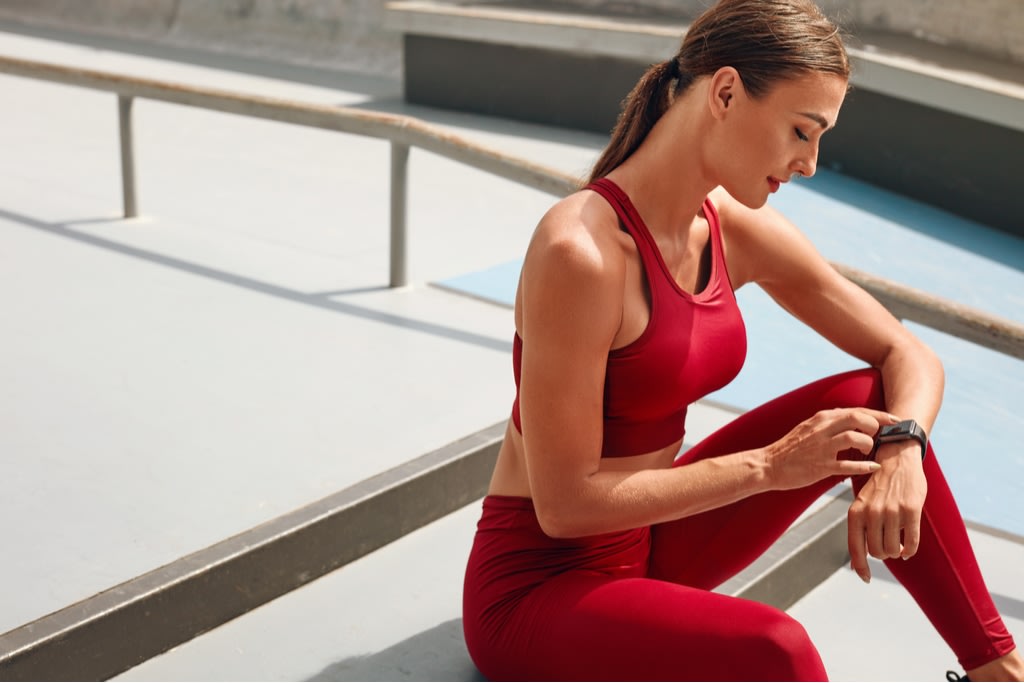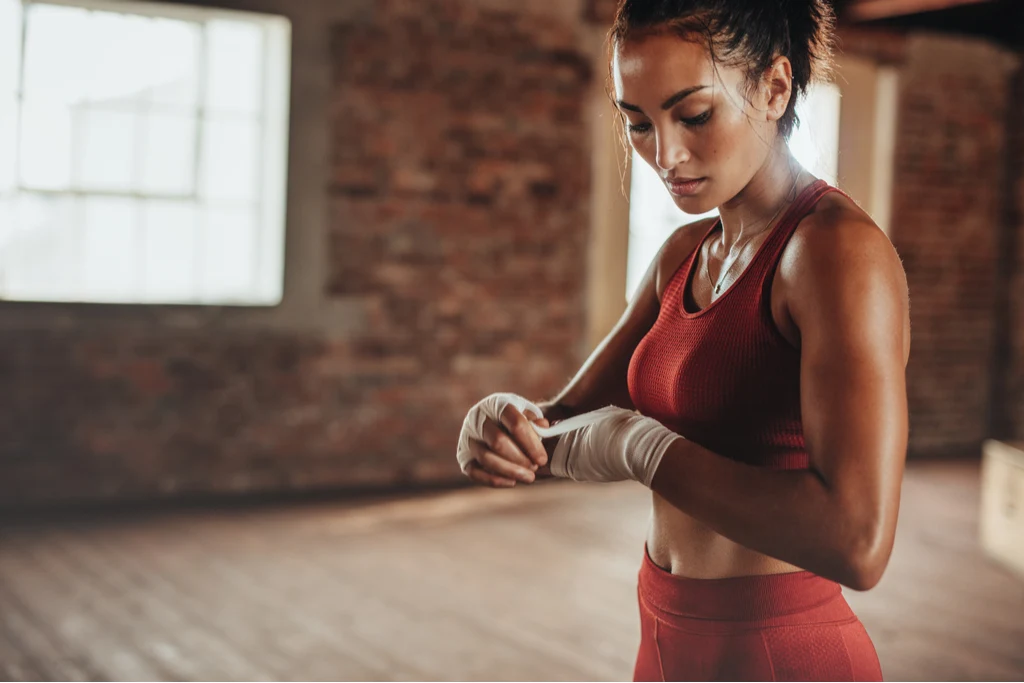Exercise During Your Period & Each Stage Of Your Cycle

November 25, 2020 - Updated November 14, 2024

If you’re someone who menstruates, you’ve likely had days where your cycle has impacted your workout plans or had questions about how and when you should be exercising during your period.
While the most common question tends to focus on whether or not you should be working out when you have your period, research shows there’s so much more to it than that! Hormonal changes throughout your entire menstrual cycle can have a range of effects on energy levels and exercise performance, and particular forms of exercise may be better suited to each stage of your cycle.
When scheduling your workouts, it’s worth taking into account where you are in your cycle and how this might affect your training while also considering how your training can set you back or propel you forward.
The average menstrual cycle lasts for 28 days and has four main phases - menstruation, the follicular phase, ovulation and the luteal phase. While the length of each phase and the full cycle can vary from person to person, this guide can help you better understand your body and choose different styles of training for every stage of your cycle — and could even help boost your performance.
Exercising during your period
It’s that time of the month — the menstrual phase. This is when you’re menstruating, or when you’re actually on your period. But what is actually happening during this time, and how can you best support your body?
During this phase, your uterus is shedding the lining it has built up throughout the month. The first day of your period is considered day one of your cycle, and this phase typically lasts between three and seven days. At the beginning of your period, your progesterone and oestrogen levels will be at their lowest and as your period goes on, these hormone levels will gradually increase.
How should you exercise when you have your period?
If you experience symptoms such as bloating, cramps or fatigue in the early days of your period, it’s perfectly okay if you don’t feel like doing much intense exercise. You may want to reschedule your workouts or opt for stretching instead, as some research has shown that a weekly yoga class can help to reduce menstrual cramps.
Sweat’s Head Trainer, Kayla Itsines, has spoken out about her own journey with endometriosis and openly talks about how she’s feeling during her period, highlighting that she doesn't put pressure on herself to train on days when she’s experiencing pain or feeling unwell.
However, the idea that your period should automatically hold you back from exercising is a myth. For some people the hormonal changes during this time can actually help you to feel stronger and able to push yourself more than usual during your workouts!
Everyone is different, so see how you feel, honour your body and do what feels right for you.


Exercising during the follicular phase
The follicular phase actually begins on the first day of your period and continues until the beginning of ovulation. This is typically days one to 11 of your menstrual cycle. During the follicular phase, your body creates a hormone known as follicle-stimulating hormone (FSH). This hormone signals to the ovaries to create eggs for the ovulation phase, each of which is housed inside a “follicle”. After menstruation is over, your oestrogen levels get a big boost as your body prepares to release an egg — which is usually associated with increased energy and when you tend to perform at your best.
How should you exercise during the follicular phase?
Once your period has ended and your oestrogen and energy levels increase towards ovulation, the follicular phase is a good time to challenge yourself with your training.
High intensity interval training
Whether High Intensity Interval Training (HIIT) is already a regular part of your routine or it’s entirely new for you, HIIT workouts are a great way to exercise when your energy levels are high! HIIT is fast-paced, fun, and has the physical benefits of increasing your VO2 max - a measure of aerobic fitness which refers to the maximum amount of oxygen your body can utilise during exercise.
Strength training
The follicular phase is also the perfect time to push yourself a little more with your strength training. This could mean challenging yourself with heavier weights, hitting a new PB, or trying push-ups on your toes instead of your knees. If you’re new to strength training, start with some bodyweight exercises to build your confidence and make the most out of this high-energy phase.

Exercising during the ovulation phase
The ovulation phase is just after the follicular phase and before the luteal phase, and typically lasts for about a day. This when your ovary releases an egg - in other words, you're at the most fertile point of your cycle! During this time, you’ll still have high levels of oestrogen from the follicular phase, while also having increased levels of luteinising hormone (LH) and FSH. LH is what triggers the body to start ovulating.
Similar to the follicular phase, ovulation tends to be a higher energy time, so if you want to dial up the intensity and enjoy workouts that require a solid burst of energy and exertion, now is a great time to go for it!
Exercising during the luteal phase
The luteal phase is the last phase of your menstrual cycle before menstruation begins again. This typically lasts 12 to 14 days, between days 18-30, depending on your unique cycle.
After ovulation, it's natural to notice your energy decrease the closer you get to menstruation. The last part of this phase is when you might experience symptoms associated with PMS (premenstrual syndrome) such as mood changes, tender breasts, breakouts, increased water retention, changes in temperature, appetite changes or bloating.
The luteal phase is also characterised by a peak in progesterone levels — which can make some people feel drowsy. One 2003 research review by the University of Sydney, suggested that for women doing endurance training, the mid-luteal phase is associated with increased cardiovascular strain and decreased time to exhaustion in hot conditions, most likely due to an increase in body temperature at this part of the cycle. This is a consideration for women undertaking endurance training or planning races, particularly in hot, humid conditions.
Impaired running performance caused by an increase in core body temperature during the luteal phase was also observed by a small 2020 study by St Mary's University in the UK. This does not mean that you shouldn’t run or exercise during this phase, but it may feel more difficult than other phases of your cycle and knowing when to slow down is important.
How should you exercise during the luteal phase?
During the luteal phase, you can continue with your usual workout routine, but you may find it difficult to complete each session with your usual intensity or enthusiasm. Here are some exercises you might like to try during the luteal phase of your menstrual cycle.
Yoga or Pilates
A 2019 study published in the Journal of Education and Health Promotion, studied 72 participants over the course of a month, comparing the benefits of aerobic exercise to yoga for relieving premenstrual syndrome (PMS) symptoms. Although aerobic exercise was effective in reducing these symptoms, those who did yoga were found to have a more significant reduction in symptoms.
During the luteal phase when you are about to get your period and energy levels may be lower, this is a great time to practice yoga or Pilates — both of which gently increase overall strength while also releasing muscle tension. If you’re new to yoga, start with this guide to yoga for beginners.
Low-intensity cardio
In the same 2019 study, aerobic exercise was also found to be beneficial for relieving PMS symptoms when performed three times a week for 12 weeks. During the luteal phase, you may like to try low-intensity cardio training: this could be going for a long walk, swim or bike ride.
A small 2017 observational study by Saarland University in Germanyfound that during the mid-luteal cycle phase, there was a reduction in maximal endurance performance for sub-elite female soccer players.
Although more research is needed, the findings suggest pushing yourself to your absolute maximum cardio effort for a sustained period of time might not be possible during this phase. Try opting for low-intensity aerobic exercise instead or recognise it might not be your best workout!
Track your period to know your cycle
To know which phase of your cycle you are in, it’s important to track your period. You can do this the old-fashioned way using your calendar or diary, or use a period tracking app to monitor your menstrual cycle and symptoms.
Tracking your cycle can allow you to become more familiar with how your unique cycle works, and how the different phases of your cycle influence your energy levels, mood, and exercise performance.
If you're someone who enjoys tracking your weights or workout performance, or you're measuring your progress in any way, it can also help to only compare measurements from the same phases of your cycle. If you're lifting weights for example, we wouldn't want you beating yourself up because you hit a PB near ovulation, and then needed to reduce your weights a week later when your hormone profile had changed.
Exercising during your period: do what’s right for you
While there is evidence that highlights how your hormones can affect your physical performance during each phase of your cycle, this doesn’t mean there is a one-size-fits-all approach when it comes to exercising.
Everyone’s bodies and menstrual cycles are different, as are the ways you prefer to train.
You might find that you have lots of energy throughout your cycle and make only minor changes to your workout schedule, while your best friend makes lots of adjustments to her routine as her energy, hormones and symptoms fluctuate. The key is to listen to your own body!
Tracking your period is a great way to stay on top of your health and understand your hormonal changes, but it doesn’t need to determine what kind of exercise you do. Do what feels right for you, focus on building healthy habits, and remember any kind of exercise — even if it’s just a stretching session — is great for your health in the long run.

A more empowered you starts with Sweat, and our editorial team is here to bring you the latest fitness tips, trainer recommendations, wellbeing news, nutritional advice, nourishing recipes and free workouts.
* Disclaimer: This blog post is not intended to replace the advice of a medical professional. The above information should not be used to diagnose, treat, or prevent any disease or medical condition. Please consult your doctor before making any changes to your diet, sleep methods, daily activity, or fitness routine. Sweat assumes no responsibility for any personal injury or damage sustained by any recommendations, opinions, or advice given in this article.
Wellbeing